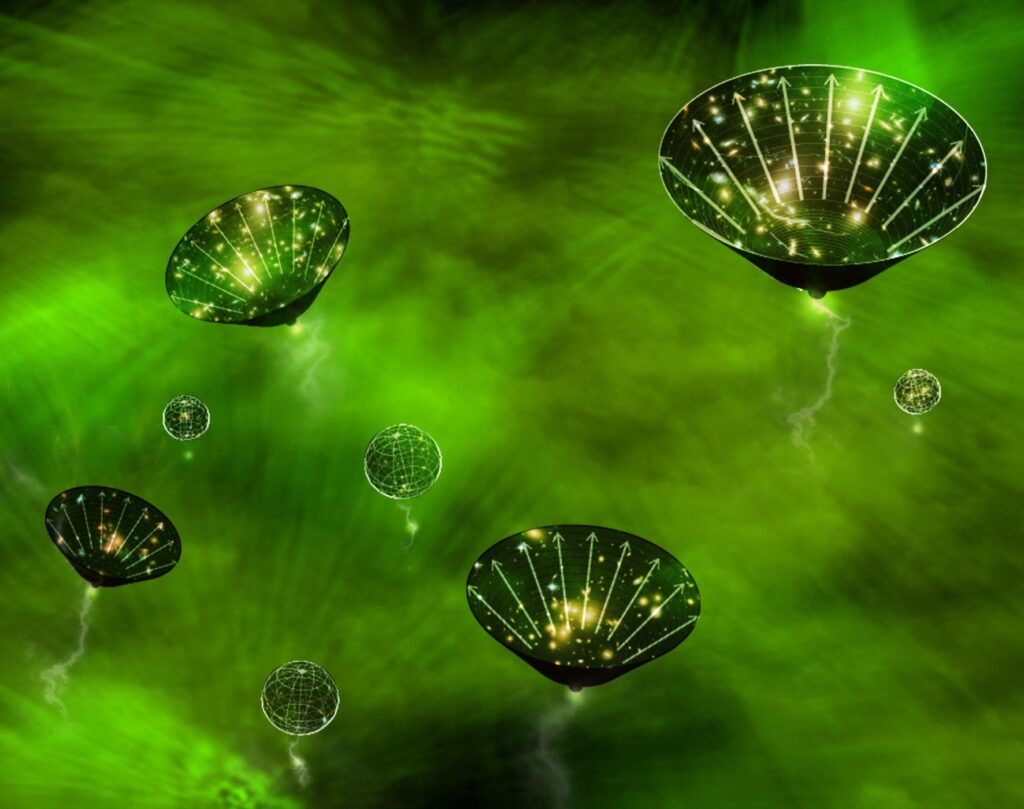Black holes are always on the list of interesting things one likes to explore. The Kavli Institute for the Physics and Mathematics of the Universe is home to many interdisciplinary projects which benefit from the synergy of a wide range of expertise available at the institute. One of such interesting projects is the study of black holes that could have formed even before the stars and galaxies were born.
These black holes also called as Primordial Black Holes (PBHs) could be responsible for all or part of dark matter, be accountable for some observed gravitational waves signals, and supermassive black holes found at the centre of our Galaxy and other galaxies. There is also speculation that these could play a role in the synthesis of heavy elements when they collide with neutron stars and destroy them, releasing neutron-rich material.
An exciting possibility which is still not yet known is that the mysterious dark matter, which accounts for most of the matter in the universe, is composed of primordial black holes.
The research team focused on the early universe for clues in order to learn more about primordial black holes. The early universe was so dense that any positive density fluctuation of over 50% would create a black hole, but the cosmological perturbations that seeded galaxies are much smaller. The creation of black holes could have resulted from many processes going in the right way.
One possibility for the formation of baby universes created during inflation (a period of rapid expansion that is believed to be responsible for seeding the structures we observe today, such as galaxies and clusters of galaxies) could be PBHs. Baby universes could branch off of our universe during this fluctuation. A collapse of such a small baby universe could have resulted in an enormous amount of energy release resulting in the formation of a black hole.
One more interesting feature of a bigger baby universe is that if its size is bigger than some critical size, Einstein’s theory of gravity allows the baby universe to exist in a state that appears different to an observer on the inside and the outside. It means that for an internal observer it seems like it’s an expanding universe, whereas for an outside observer (such as us) sees it as a black hole.
Either way, both of the baby and big universes are PBHs which conceal the underlying structure of multiple universes behind their “event horizons.” The event horizon is a boundary below which everything, even light, is trapped and cannot escape the black hole.
The team described a novel scenario for PBH formation and showed that the black holes from the “multiverse” scenario can be found using the Hyper Suprime-Cam (HSC) of the 8.2m Subaru Telescope, a gigantic digital camera — the management of which Kavli IPMU has played a crucial role — near the 4,200 meter summit of Mt.Mauna Kea in Hawaii.
This work extends the HSC search of PBH that Masahiro Takada, a Principal Investigator at the Kavli IPMU, and his team are pursuing.
A unique feature and capability of HSC is that it can image the entire Andromeda galaxy every few minutes. If a black hole passes through the line of sight to one of the stars, the black hole’s gravity bends the light rays and makes the star appear brighter than before for a short period and thus the mass of black hole is known from how long did the star’s brightening last. Taking the help of HSC observations, one can simultaneously observe one hundred million stars, casting a wide net for primordial black holes that may cross one of the lines of sight.
The first HSC observations have already reported a very intriguing candidate event consistent with a PBH from the “multiverse,” with a black hole mass comparable to the mass of the Moon. The encouragement from these results has helped the team to conduct more rounds of observations.
Journal Reference:
Alexander Kusenko, Misao Sasaki, Sunao Sugiyama, Masahiro Takada, Volodymyr Takhistov, Edoardo Vitagliano. Exploring Primordial Black Holes from the Multiverse with Optical Telescopes. Physical Review Letters, 2020; 125 (18) DOI: 10.1103/PhysRevLett.125.181304
Press Release: Kavli Institute for the Physics and Mathematics of the Universe

